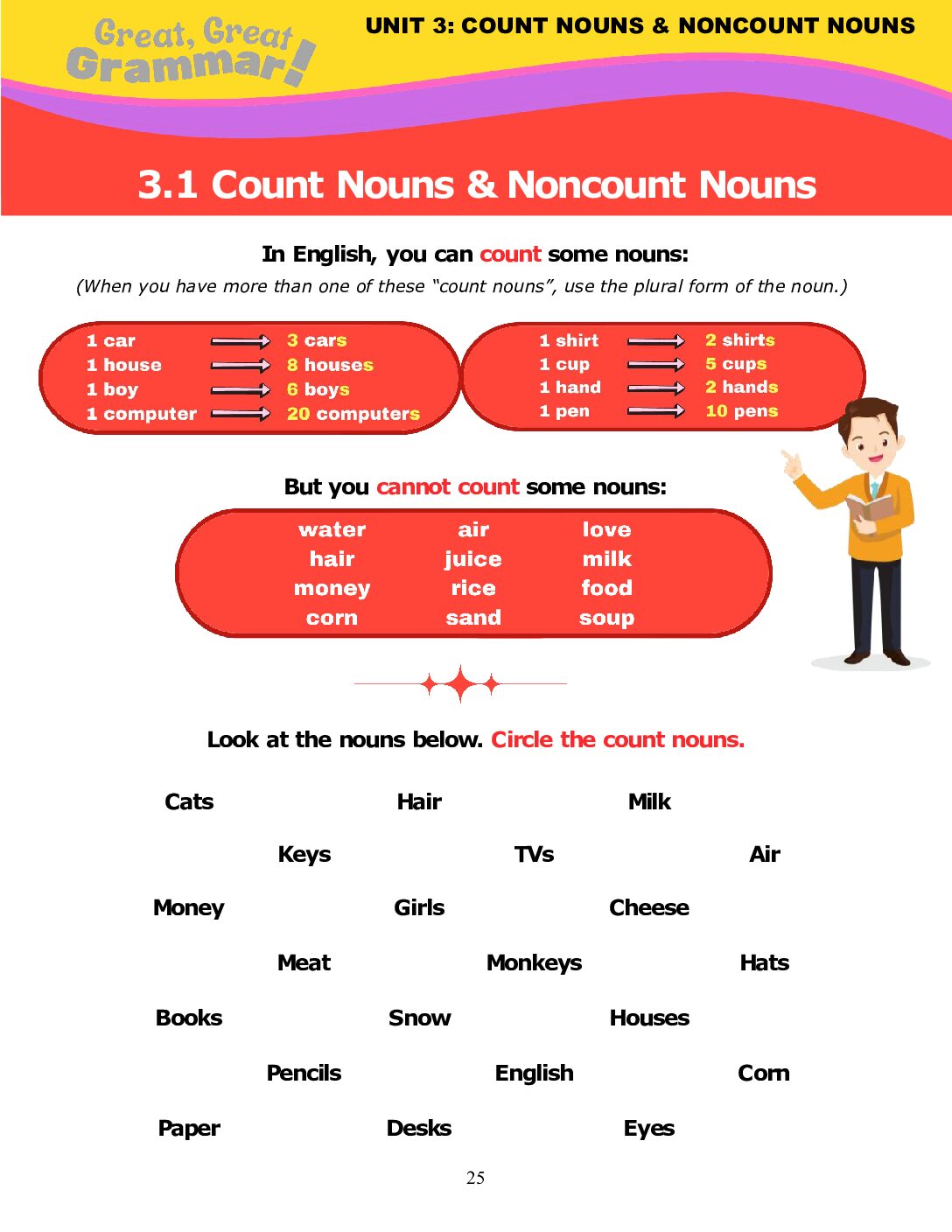This ESL grammar lesson introduces students to count nouns and noncount nouns. Students then practice identifying count nouns.
Understanding the difference between count and noncount nouns is essential for mastering English grammar. Count nouns, also known as countable nouns, refer to items that can be counted individually, such as “apple,” “car,” and “book.” Noncount nouns, or uncountable nouns, refer to substances or concepts that cannot be divided into individual elements, such as “water,” “music,” and “information.”
ESL Grammar: Count Nouns: Definition and Examples
Count nouns are easy to identify because they can be singular or plural. For example:
- Singular: apple, car, book
- Plural: apples, cars, books
Count nouns can be preceded by numbers and the articles “a” or “an.” For example:
- I have an apple.
- She owns three cars.
- He borrowed a book from the library.
ESL Grammar: Count and Noncount Nouns Exercises
This beginner-level English grammar lesson on count/noncount nouns is perfect for both online and in-person classes, offering diverse content to suit any learning environment. Explore this and many similar grammar lessons for all levels on our page of ESL grammar lessons.
This lesson is available for free download, and you can download many more English grammar lessons focusing on all different parts of speech (nouns, verbs, adjectives, adverbs and lots more!) in our comprehensive, beginner-level ESL grammar textbook Great, Great Grammar! (Book 1: Parts of Speech).

